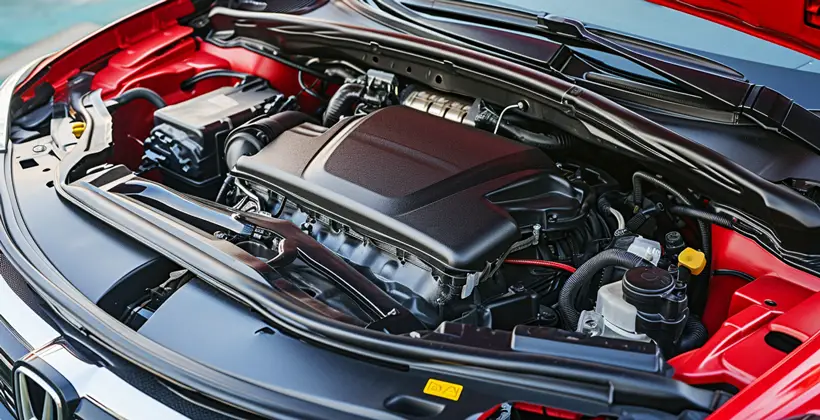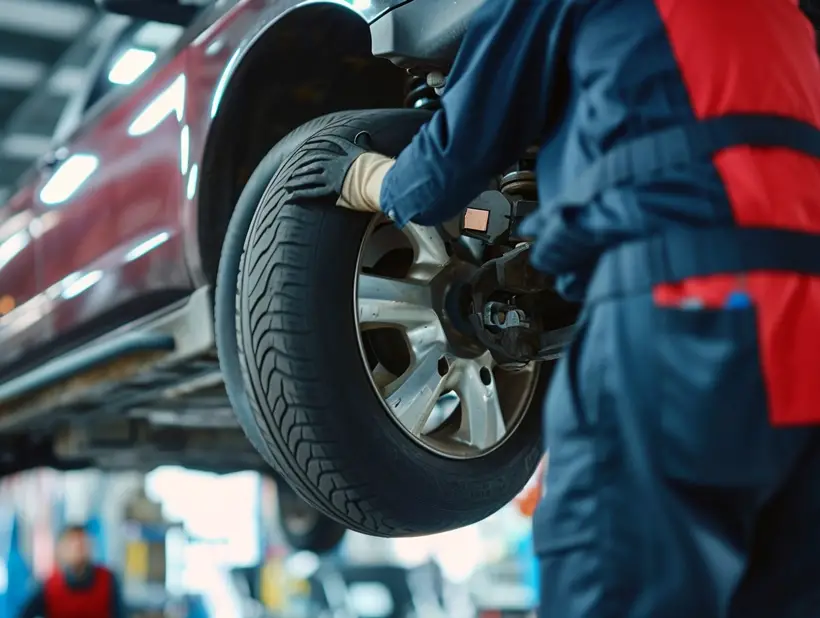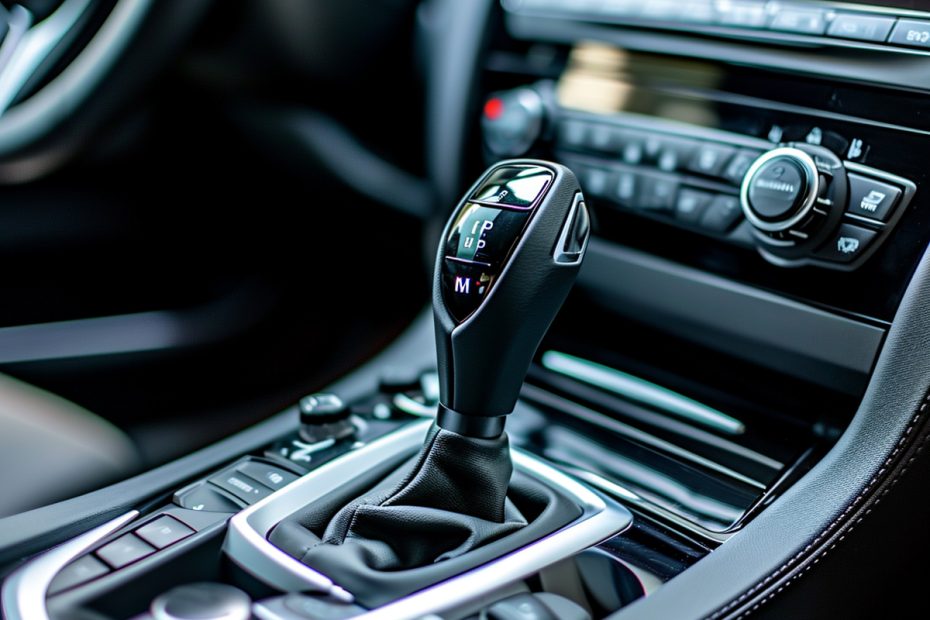Experiencing a car that won’t go into gear can be both frustrating and alarming. As someone who’s passionate about automotive troubleshooting, I understand the importance of a smooth-operating manual transmission. Whether you’re stuck in your driveway or trying to navigate through traffic, gear issues are a problem you’ll want to address immediately.
I’ve encountered my fair share of transmission quirks over the years, and I’m here to share some insights. From the clutch not engaging to the ominous grinding noise when you shift, I’ll help you pinpoint the issue. Stay tuned as I dive into the common culprits behind manual transmission woes and how to troubleshoot them effectively.
Common Symptoms of Manual Transmission Problems
When it comes to manual transmission glitches, various signs can indicate the presence of an issue. I’ve seen many cases where car owners are left bewildered by the behavior of their vehicles. Here are some of the symptoms I’ve learned to watch out for that suggest a manual transmission may be facing problems:
- Difficulty shifting gears: One clear sign you might notice is a resistance or struggle when you try to move the gear lever.
- Unusual noises: If you hear humming, whining, or a grinding sound during gear shifts, this is often a sign of worn bearings or gear teeth.
- Slipping gears: When the transmission slips out of gear while driving, it’s not only alarming but can also point to an internal problem.
- Leaks and odors: Spotting red fluid under your car or smelling a burnt scent inside the cabin can indicate a leak and overheating in the transmission system.

Amidst these signs, I particularly pay attention slipping gears and grinding noises, as they can be indicative of more serious issues that should be addressed promptly. Also, it’s important to check the transmission fluid regularly. Here’s a simple table of what the fluid’s condition may reveal:
| Fluid Condition | Potential Issue |
|---|---|
| Clean and Clear | Healthy Transmission |
| Dirty or Cloudy | Possible Wear and Tear |
| Burnt Smell | Overheating or Internal Damage |
It’s essential to maintain a consistent schedule for transmission fluid changes as recommended by your vehicle manufacturer. Ignoring these symptoms can lead to more significant troubles down the road. Addressing these issues early can save you both time and money while ensuring that your car remains reliable and safe on the road. Keep in mind, the symptoms can be as straightforward as a lack of fluid or as complex as internal damage; each case requires a thorough analysis to correctly diagnose and resolve the problem.
Possible Causes of Gear Issues
When I’m approached about gear problems in manual transmissions, my first step is to pinpoint the root causes. There are several factors that might prevent a car from going into gear, and understanding them is crucial to troubleshooting.
- Worn Out Clutch: The clutch disengages the engine from the transmission to change gears. Over time, it can wear out and fail to perform this essential function.
- Misaligned Clutch System: If the clutch isn’t aligned properly, it can cause difficulty in shifting gears.
- Faulty Master Cylinder: The master cylinder is part of the hydraulic system that operates the clutch. If it’s leaking or failing, you’ll likely face issues with gear shifting.
Another culprit could be the synchronizers. These components help the gears to match speed when shifting. When they’re worn, gears may either refuse to engage or pop out after engagement. Similarly, issues with the shift linkage or cables could be the problem. Wear or damage here can hinder your ability to select gears.

Here’s a brief rundown of some telltale signs that correlate with the potential causes:
| Symptom | Potential Cause |
|---|---|
| Difficulty shifting gears | Worn clutch, misalignment |
| Gear slipping | Worn clutch, damaged gears |
| Grinding noises | Worn synchronizers |
| Complete gear lockout | Faulty master cylinder |
Remember, regular maintenance can catch many of these issues before they become severe. It’s critical to pay attention to the initial signs of trouble and address them promptly to keep your manual transmission running smoothly. If you suspect any of these issues might be affecting your vehicle, it’s advisable to consult a professional mechanic for a thorough assessment.
Troubleshooting Steps for a Car That Won’t Go Into Gear
When I’m faced with a manual transmission car that refuses to go into gear, there’s a systematic approach I like to follow to pinpoint the issue. Here are the steps I take to troubleshoot this frustrating scenario:

Assess the Clutch Pedal
First and foremost, I check the clutch pedal. It should have some resistance when pressed. If it feels spongy or too loose, there may be an issue with the clutch cable or hydraulic system. In hydraulic systems, low fluid levels or air bubbles in the line can lead to poor performance.
Inspect Transmission Fluid
Next, I take a look at the transmission fluid. As I’ve previously mentioned, the quality and level of fluid are crucial for proper gear operation. Here’s a quick review of what to check for:
- Color: Dark or burnt-smelling fluid can signify wear.
- Level: Too low fluid levels can cause difficulty in shifting.
Examine the Gear Shift
After fluids, it’s time to examine the gear shift itself. Movements should be smooth and define without any obstruction. Resistance or looseness could indicate a problem with the shift mechanism or linkage.
Check for External Blockages
Sometimes, the issue can be as simple as an obstruction from floor mats or debris blocking full engagement of the clutch pedal.
Listen for Unusual Noises
I listen carefully for noises when attempting to shift. Clicking or grinding sounds may reveal worn components within the transmission or problems with the gear synchronizers.
Perform a Visual Inspection
Under the hood, I perform a visual inspection to ensure that the linkage and cables connecting the gearshift to the transmission are intact and functioning correctly. Any visible damage or excessive wear might be the culprit.
By following these steps, I can usually identify common issues preventing a car from going into gear. Addressing these problems early can save time and money, ensuring a smoother ride down the road.
Checking and Adjusting the Clutch
When a car refuses to go into gear, one critical component to check is the clutch. My experience tells me that clutch maladjustment is a frequent offender, especially in manual transmissions. Let’s delve into how to ensure that your clutch is functioning properly and adjusted correctly.
Understanding Clutch Engagement: To start, it’s essential to grasp how the clutch works. The clutch connects and disconnects the engine from the transmission to allow for smooth gear shifts. When the clutch pedal is pressed, it should disengage the engine from the transmission. If there’s an issue with clutch engagement, gear shifting can become problematic.

Here’s what I recommend when inspecting the clutch system:
- Feel the Pedal: Press the clutch pedal and pay attention to its resistance and point of engagement. The pedal should not be too loose or too stiff, and the clutch should engage when the pedal is about halfway to the floor.
- Look for Wear: Examine the clutch pedal for signs of wear. A worn pedal can indicate that it’s not activating the clutch mechanism adequately.
To adjust the clutch, follow these steps:
- Locate the clutch lever and the adjustment rod near the transmission.
- Check the clutch pedal freeplay – the distance it travels before resistance is felt.
- If necessary, loosen the locknut on the adjustment rod and turn the adjuster to achieve the appropriate amount of freeplay.
- Once adjusted, tighten the locknut and test the pedal again to ensure proper engagement.
Monitoring Clutch Fluid: In hydraulic clutches, the clutch fluid should be monitored. Low or contaminated fluid can lead to engagement issues. Check the fluid reservoir and top up or change the fluid if needed. Remember, the color of healthy clutch fluid should be clear or slightly yellow.
If adjusting the clutch doesn’t resolve the problem, there might be more serious issues at hand such as a worn clutch plate or damaged pressure plate. In such cases, it’s often best to seek professional help to avoid further damage to your vehicle.
In the next section, we’ll look at the role of the gearbox linkage in gear selection problems and how you might address any issues in that area.
Addressing Grinding Noises While Shifting
When my car began to emit grinding noises each time I attempted to shift gears, I knew something was amiss with the transmission system. This type of noise typically indicates that the gears are not engaging properly. Here’s what I found to be effective when addressing such issues.
Identifying the Cause of the Noise
First off, it’s crucial to determine whether the grinding noise occurs during all shifts or is isolated to one particular gear. If it’s the latter, specific gear wear or damage might be the culprit. Here are the factors I looked into:
- Worn Clutch: A clutch that doesn’t disengage fully can cause the gears to grind.
- Misaligned Gear Linkage: Improper alignment can prevent clean gear engagement.
- Transmission Fluid: Low or dirty fluid can cause gears to grind since they aren’t being adequately lubricated.
Steps to Take
To tackle these grinding noises, I took the following steps:
- Check the Clutch: I made sure the clutch engages and disengages as it should by testing pedal pressure and looking for any signs of slippage.
- Inspect the Gear Linkage: I checked for any signs of misalignment or damage that might impede gear changes.
- Evaluate Transmission Fluid: I ensured the fluid was at the proper level and not contaminated, suggesting a need for replacement.
When to Seek Professional Help
While some situations can be solved with simple adjustments, significant noise during shifting often requires an expert’s touch. Here’s when I’d advise getting a professional:
- Persistent Noise: If after making the basic checks and adjustments, the grinding persists.
- Severely Worn Components: When visual inspection reveals that the clutch or linkage components are beyond simple repairs.
- Unidentifiable Issues: If the source of the noise isn’t clear, it’s time to let a mechanic diagnose the problem.
Exploring these aspects got me closer to solving my car‚Äôs reluctance to shift gears smoothly and quietly. Ensuring all moving parts are in optimal working condition is key for a manual transmission to function seamlessly. The steps I’ve mentioned need a meticulous approach, overlooking none, to effectively address and prevent potential issues that manifest as grinding noises. Moving forward, regular maintenance will play a pivotal role in transmission health, helping to spot early signs of wear and keeping those grinding sounds at bay.
